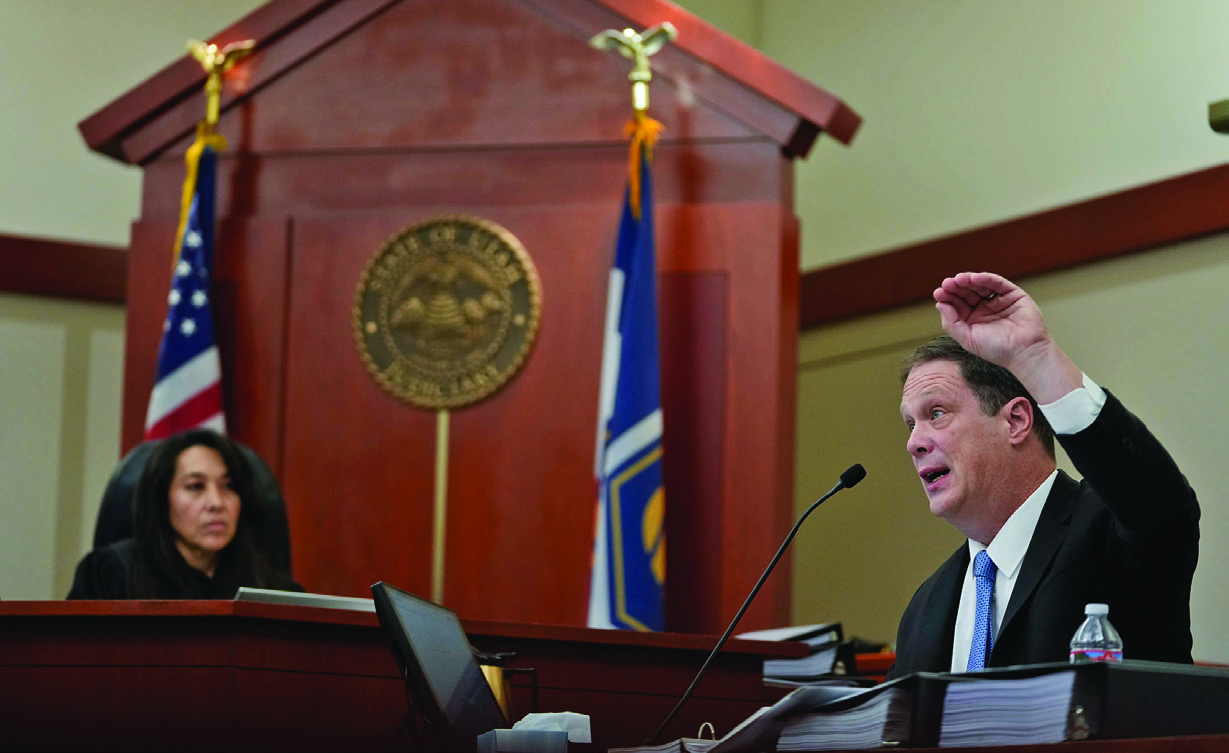
Redistricting fights are nothing new in Utah. But what happened last week wasn’t a fight over four congressional lines — it was a rupture in the separation of powers that holds our system together.
Judge Dianna Gibson didn’t just strike down a legislative map or invalidate a statute. Those are well-established judicial powers, whether or not one agrees with the outcome. The constitutional problem began when the court selected, approved, and ordered the implementation of a congressional map drafted by the plaintiffs themselves.
That may sound like a small procedural detail. It isn’t. Under Utah’s Constitution, it crosses the line from judicial review into judicial lawmaking — and that is a step no court in Utah has ever taken.
As a sitting Utah state senator and former university professor who has studied constitutional design and democratic structures for decades, I take seriously the balance of powers that protects self-government.
What the Constitution says
The Utah Constitution is explicit: “The Legislature shall divide the state into congressional, legislative, and other districts…”
— Article IX, Section 1
Two words matter here: shall and the Legislature.
The authority is mandatory and exclusive. Courts may review what the Legislature draws. They may strike down unlawful districts. But in my view, nothing in our Constitution empowers a judge to choose or impose a replacement map.
Others argue Article I, Section 2 of the Utah Constitution gives the people far broader power to restructure government through initiatives. The Utah Supreme Court’s 2023 League of Women Voters ruling held the people’s right to “alter or reform” government is judicially enforceable. But that opinion did not say courts may take over legislative tasks such as drawing congressional lines.
What Proposition 4 allows
Much has been said about Proposition 4 and its role in this case. Proposition 4 sets standards to guide redistricting. It requires transparency. And it allows courts to enjoin maps that violate those standards be amended.
But it does not give courts map-drawing power.
Under Proposition 4, the roles remain distinct: The Legislature redraws. The courts review. That is the full extent of judicial authority contemplated in the initiative and statute.
Yet the court approved “Plaintiffs’ Map 1” to meet the lieutenant governor’s deadline for a congressional plan that complies with both federal and Utah law ahead of the 2026 elections — a map never subjected to Proposition 4’s transparency rules, public hearings, or independent commission review. In doing so, it bypassed the very safeguards the initiative was designed to preserve.
Federal cases don’t justify what happened
Judge Gibson’s opinion relies heavily on federal cases from the 1970s in which courts imposed maps after finding constitutional violations — malapportionment or Voting Rights Act breaches.
But that’s not the situation Utah faces.
This case involves statutory standards, not constitutional violations. No one has argued that Utah’s districts violate the Equal Protection Clause or the Voting Rights Act. Without a constitutional injury, the extraordinary remedy of judicial map-drawing is not triggered.
The process matters more than the map
Some will defend the ruling because they prefer the outcome of the plaintiffs’ map. But constitutional structure is designed for precisely the moments when the outcome tempts us to ignore the process.
If judges may choose the maps this year, they may choose education policy next year, or tax policy the year after. Utahns across the political spectrum should pause before cheering that development.
Our government works because each branch — and each process — has limits. When courts begin performing legislative tasks, those limits crumble.
The proper remedy
If the court believed the Legislature violated Proposition 4, the remedy was straightforward:
• Strike the unlawful map, and
• Remand the issue to the Legislature for correction.
That is how judicial review works. That is how Proposition 4 was designed to operate.
Courts decide whether a map is lawful. The Legislature decides what the replacement map looks like.
Judge Gibson decided both.
Stakes are bigger than this case
This is not a partisan question. It is a constitutional one.
If a single judge can substitute her chosen map for the map written by representatives elected — and constitutionally required — to draw it, then Utah risks ceding a fundamental part of self-government to the judiciary.
Whether you supported or opposed Proposition 4, whether you like the Legislature’s map or the plaintiffs’ map, the underlying issue is: Who draws the lines that determine our representation?
The Utah Constitution gives that responsibility to the Legislature. That arrangement is not always tidy or comfortable, but it is democratic — and it is lawful.
We can and should debate fairness, transparency, and how best to earn public trust in the redistricting process. Those discussions belong in the public square and in the Legislature.
They do not belong in a courtroom where the separation of powers is optional.
If Utah remains committed to the principle that laws — including electoral boundaries — are made by the people’s elected Legislature, then this ruling cannot stand.
Because in a constitutional republic, maps may shift — but the separation of powers is not negotiable.
Call to action
For the sake of constitutional stability, I urge the Utah Supreme Court to issue a stay, review this case promptly, and reaffirm the basic principle that the Legislature — not the judiciary — draws Utah’s congressional districts.
And I encourage Utahns, regardless of party, to insist that our courts respect the limits that preserve democratic self-government.
John D. Johnson, R, represents Morgan, Summit, and Weber counties in the Utah State Senate. He was elected in 2020.
